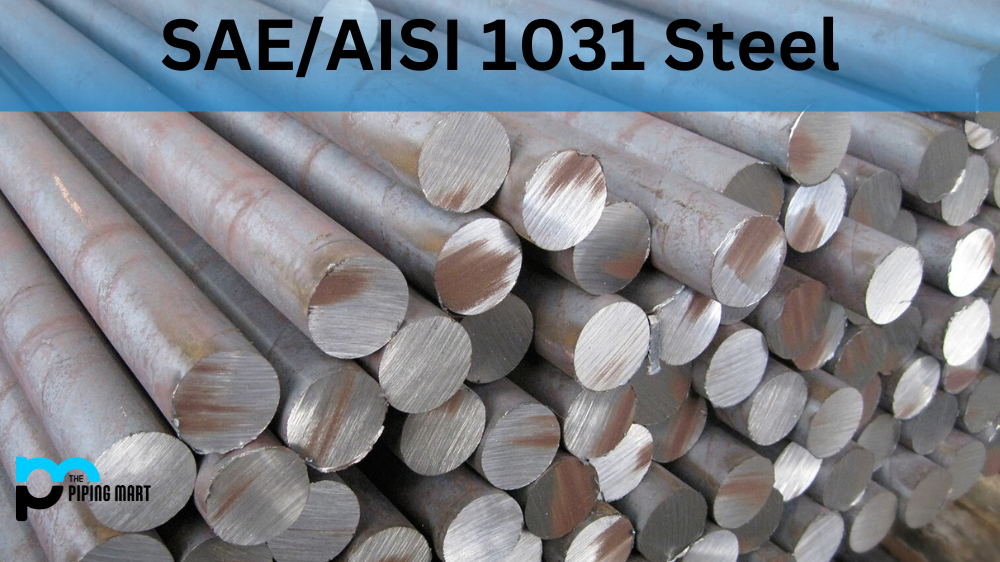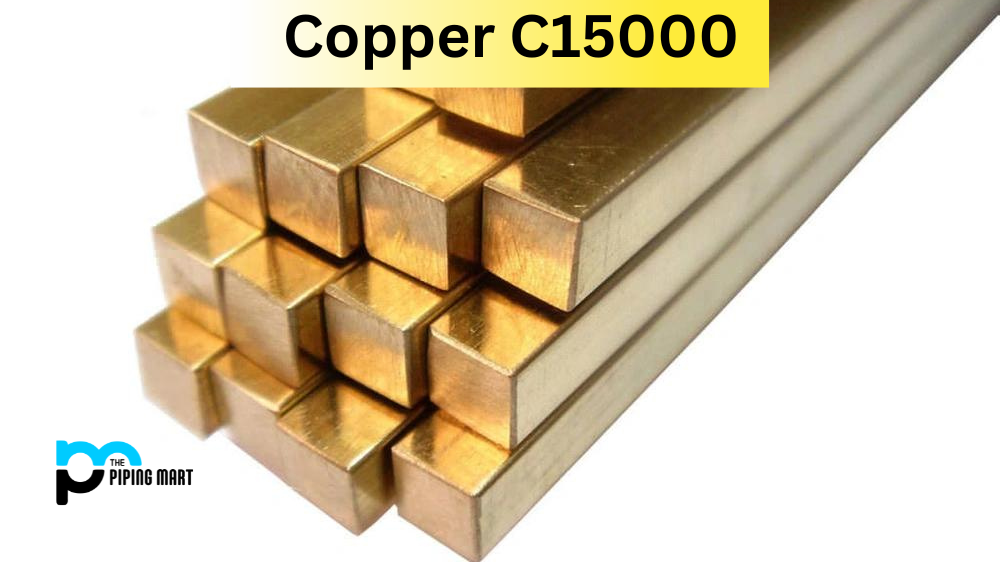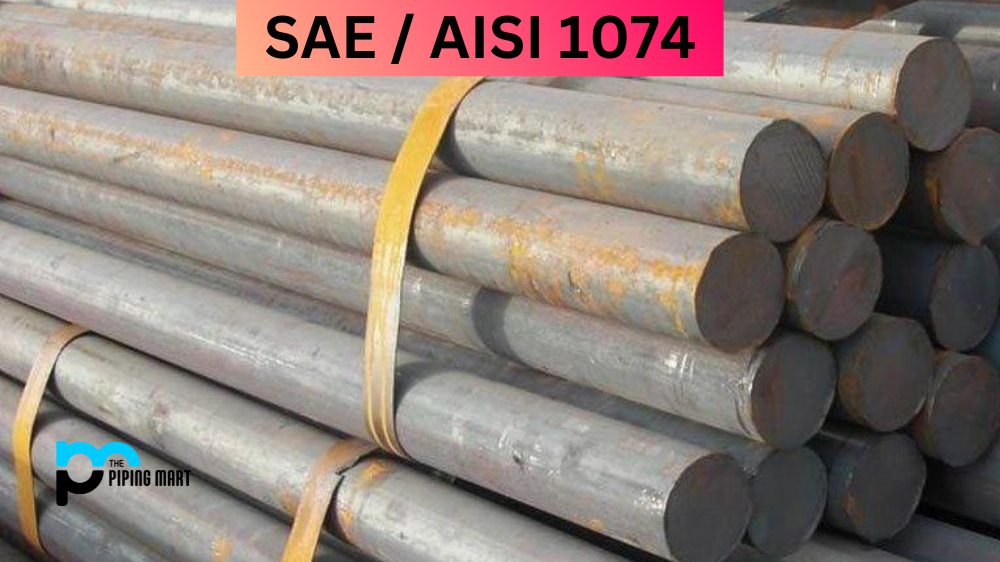AISI 1031 steel is an alloy of iron and carbon known for its strength, durability, and corrosion resistance. This special steel is used in various applications, from automotive components to construction projects. But what exactly makes this steel so special? Let’s look at the composition, mechanical properties, physical properties, uses corrosion resistance, heat resistance, heat treatment, machining, and welding of SAE/AISI 1031 steel.
AISI 1031 Composition
SAE 1031 stainless steel is composed of iron (Fe), carbon (C), manganese (Mn), phosphorus (P), sulfur (S), silicon (Si) and chromium (Cr). The combination of these elements makes it strong and durable enough for use in various industries.
| Element | Content (%) |
|---|---|
| Iron, Fe | 98.67-99.13 |
| Manganese, Mn | 0.60-0.90 |
| Carbon, C | 0.270-0.340 |
| Phosphorous, P | ≤ 0.040 |
| Sulfur, S | ≤ 0.050 |
AISI 1031 Mechanical Properties
The mechanical properties of AISI 1031 SS include the following:
- Tensile strength at 790-1000 MPa.
- Yield strength at 370-670 MPa.
- Elongation at 6%-20%.
- Hardness at 158-207 HBW.
- Impact strength at 40J.
- Shear stress at 270N/mm2.
These properties make it perfect for applications where strength is key.
| Properties | Metric | Imperial |
|---|---|---|
| Tensile strength, ultimate | 525 MPa | 76100 psi |
| Tensile strength, yield | 440 MPa | 63800 psi |
| Modulus of elasticity | 190-210 GPa | 29700-30458 ksi |
| Bulk modulus (typical for steel) | 140 GPa | 20300 ksi |
| Shear modulus (typical for steel) | 80 GPa | 11600 ksi |
| Poissons ratio | 0.27-0.30 | 0.27-0.30 |
| Elongation at break (in 50 mm) | 12% | 12% |
| Reduction of area | 35% | 35% |
| Hardness, Brinell | 149 | 149 |
| Hardness, Knoop (converted from Brinell hardness) | 169 | 169 |
| Hardness, Rockwell B (converted from Brinell hardness) | 80 | 80 |
| Hardness, Vickers (converted from Brinell hardness) | 155 | 155 |
| Machinability (based on AISI 1212 steel. as 100 machinability) | 70 | 70 |
AISI 1031 Physical Properties
The physical properties of Grade 1031 ss include the following:
- A density of 7.83 g/cm3.
- Modulus of elasticity (Young’s Modulus) at 200 GPa.
- Thermal conductivity at 26 W/(m·K).
- Electrical resistivity at 0.65 μΩ·m.
Its low electrical resistivity makes it ideal for electrical applications and engineering projects requiring precise measurements.
| Properties | Metric | Imperial |
|---|---|---|
| Density | 7.85 g/cc | 0.284 lb/in3 |
| Melting point | 1510°C | 2750°F |
AISI 1031 Thermal Properties
| Properties | Metric | Imperial |
|---|---|---|
| Thermal expansion co-efficient (@15-75°C/59-167°F) | 11.7 µm/m°C | 6.50 µin/in°F |
| Thermal Conductivity | 51.9 W/mK | 360 BTU in/hr.ft2.°F |
AISI 1031 Equivalent
| ASTM A29 (1030) | ASTM A546 (1030) | SAE J403 (1030) |
| ASTM A510 (1030) | ASTM A576 (1030) | SAE J412 (1030) |
| ASTM A512 (1030) | ASTM A682 (1030) | DIN 1.1172 |
| ASTM A513 (1030) | ASTM A830 | UNI CB 35 |
| ASTM A519 (1030) | MIL S-11310 (CS 1030) | ASTM A108 |
| ASTM A544 (1030) | FED QQ-S-700(C1030) | FED QQ-S-635 |
| ASTM A545 (1030) | SAE J1397 (1030) |
AISI 1031 Uses
Due to its unique chemical composition and solid mechanical properties, Grade 8655 steel can be used for various applications. It can be found in automotive components such as engine blocks, wheel rims and suspension parts; construction projects such as bridges and buildings; industrial machineries such as pumps and valves; tools such as blades and knives; home appliances such as washing machines and refrigerators; furniture such as desks and chairs; military vehicles such as tanks and ships. It is also used in medical equipment due to its low electrical resistivity, which helps reduce the risk of electric shocks when handling the equipment.
Corrosion Resistance
One major advantage of using SAE/AISI 1031 steel is its excellent corrosion resistance due to its high chromium content, which gives it an anti-rust coating on its surface. This helps protect the metal against rusting or corroding when exposed to air or other elements.
Heat Resistance
Another benefit of using this particular alloyed metal is its good heat resistance due to its high melting point (1412 °C). This allows the material to withstand higher temperatures without losing any structural integrity or becoming brittle over time, as some other metals are prone to when exposed to extreme temperatures for extended periods.
Heat Treatment
To increase the performance characteristics even further, heat treatment can be performed on SAE/AISI 1031 steel by heating it with either air or water cooling depending on what kind of performance enhancements are desired from the material after it has been processed through heat treatment methods like normalizing or quenching & tempering processes etcetera.
Machining & Welding
Finally, since this type of metal is relatively soft compared to other steels like stainless steels, etcetera., machining operations are relatively easy with proper cutting speeds & feeds. In contrast, welding operations will require preheating before actually welding together pieces because if there isn’t sufficient preheating done prior then, there’s a chance that warping can occur during the welding process itself making post-weld finishing operations much more difficult than they should have been in the first place.
Conclusion
All in all, SAE / AISI 1031 Steel is an excellent choice for many different types & categories of applications due to its unique combination of chemical composition with strong mechanical properties plus great corrosion & heat resistance capabilities along with being able to be machined & welded fairly easily making it one go-to option whenever looking into materials selection decisions involving metal alloys.

A passionate metal industry expert and blogger. With over 5 years of experience in the field, Palak brings a wealth of knowledge and insight to her writing. Whether discussing the latest trends in the metal industry or sharing tips, she is dedicated to helping others succeed in the metal industry.




